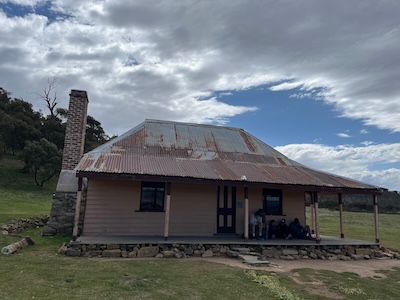Snowy Mountains were first sighted by Europeans by George Bennett in 1834 “…the beautiful clearness of the weather has afforded me a view of the ‘Snow Mountains’, the existence of which has been doubted by many.”
Summer grazing 
From the mid-1800s into the 1950s, the high plains of Kosciuszko National Park attracted summer graziers who constructed timber and tin huts as shelter throughout the area. The region which the rogaine covers was part of four early pastoral holdings called Currangorambla, Currangorambla West, Cooleman, and Long Plain (see map below). In 1884, the NSW Government revoked the leases and, very simplistically, put conditions on use for the new scrub leases for trees to be cleared.
In 1902 Arthur Triggs, from Yass, was granted a Scrub Lease that included the northern part of Long Plain. In 1905 his employees built Coonibil Hut, which you will have the opportunity to look at. Mr Trigg sold the scrub leases in 1912 to Frederick Campbell and the Campbell's ran all of the leases on Long Plain from around this time.
More than 20 of these photogenic high country huts are dotted along the many tracks and trails of the plains. Larger properties, like Currango or Coolamine Homesteads, became permanent residences and now provide a fascinating window into pioneer life.
Thanks to John Anderson for sharing his knowledge about the area from a book he is writing. Any errors in this very, very abbrieviated version are ours.

Kiandra Gold Rush
The Kiandra gold rush in 1859-60 was one of the most hectic and short-lived gold rushes. Payable gold was discovered in November 1859 and by March-April 1860 more than 10,000 men were on the field. The majority left at the start of winter and by March 1861 very few people remained. Most of this activity occurred south of the rogaine course, although there is a small amount of dredging remains in the far south-west. However, remains are clearly visible as you drive through Kiandra.

Hainsworth Hut (top) and Old Currango Hut.

